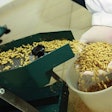It's often said an ounce of prevention is worth a pound of cure. Perhaps in the grain industry a better analogy is a kernel of prevention is worth a bushel of cure, but however you look at it, safety experts and emergency responders close to the grain industry couldn't agree more.
Preparing for natural disasters, explosions and other emergencies should rank among facility managers' highest priorities — right up there with boosting efficiency, meeting regulatory compliance and increasing customer satisfaction. But occasionally, conducting the training required to prepare an entire staff for a catastrophic event is overtaken by production obligations and busy schedules.
Even facilities with established safety programs may find they could do more to enhance their effectiveness, so leading grain industry safety experts sat down with Feed & Grain to share their best tips with facility managers on the basics of emergency preparedness.
Principle policies
One of the grain industry’s leading resources in emergency response and preparedness is the Safety and Technical Rescue Association (SATRA). The non-profit organization , established in 1990, provides training and organizational support for local, state and international search and rescue teams through SATRA's training group.
Team members are trained on rope rescue, confined space, wilderness and disaster rescue, hazardous materials management, medical training, silo rescue and more. George Lovell, COO of SATRA, also works as a fire fighter, and says the most effective safety programs depend on three principles:
- A proactive, preventive culture. Teach employees not only how to respond to emergencies, but how to identify a potentially hazardous situation and notify management before it occurs. Additionally, emphasize the importance of routine accident-prevention activities, such as housekeeping, lock out tag out and working in pairs.
- A properly trained workforce. Designate a manager to oversee and document that training occurs upon new employee orientation and continues throughout their employment.
- An established relationship with first responders. The nearest fire department may not always be the best-equipped in your area to conduct a rescue or put out a grain fire. Identify a first responder team that is properly trained in handling situations specific to the grain industry and arrange to have them regularly visit the facility.
SATRA has developed a series of checklists specific to the grain industry that elaborate on these principles (See sidebar: Grain Industry Check List, pg. 35.), prescribing what employees and first responders must be trained on, as well as which proactive measures are the most crucial in a grain or feed facility.
Wayne Bauer, general manager of Star of the West Milling in Frankenmuth, IN, suggests a fourth crucial safety principle: written safety policies. Written policies help ensure that every employee is trained to meet the same requirements — and most importantly — without any gray area or room for interpretation.
“Write clear safety policies,” says Bauer. “This will likely involve at least 35 to 50 separate policies for feed mills and/or grain handling facilities and they must include what you expect from your employees and why. A good place to start is with the 12 to 14 basic issues identified in OSHA’s Grain Handling Standards.”
OSHA standards cover areas such as bin entry, grain dust, hazardous chemicals and lifeline equipment, but Bauer suggests going further to include policies on smoking on-site, use of ladders, safety rules for site visitors, site security and stairway cleanliness, among others.
“If you’re only going to cover the basics you might have a dozen policies, but if you’re going to influence a safety culture, you should cover nearly every aspect of your facility with a safety policy,” says Bauer.
Constant reminders of your facility’s policies via formal and informal training is another crucial piece of reinforcing a proactive safety culture.
Training and drills
Bauer says Star of the West Milling relies on a combination of handouts, fliers, staff meetings and one-on-one discussions with employees to carry-out its effective safety program.
“We conduct scheduled hourly sessions using videos and demonstrations as well as special, impromptu sessions called ‘Toolbox Talks’,” says Bauer. “Informal training is critical also. If someone brings up a good topic during a session and we want to review it the next day, we’ll gather by the punch clock and discuss it. There are opportunities for training everywhere and at any time.”
State and regional conferences are another form of training Bauer endorses. More than 30 Star of the West Milling employees have attended a one- to three-day conference to receive continuing education credits for grain industry safety.
Putting training into practice with drills is the final critical component of emergency preparedness. According to SATRA’s Lovell, company policy should require monthly safety drills.
“They should be rehearsed time and time again to where they become second nature,” says Lovell. “Conducting a drill every six months will not produce effective results.”
He notes it’s not important to focus on the type of drill — e.g. fire, explosion, entrapment, hazardous substance release, tornado, etc. — because each one should have the same main components.
“Every type of drill must include a component where everybody in the facility reports to the main office to do a headcount and establish who’s missing,” says Lovell. “Then, working in pairs, begin to search for unaccounted individuals and notify the first response team if necessary.”
First responders should attend drills on at least a semi-annual basis, according to Lovell, to ensure their familiarity with your facility and establish a good working relationship.
“One of the best things you can do is become acquainted with the local fire department,” says Lovell. “If you have an established program and the fire department is well aware of it, they’ll know where the designated meeting place is and who to contact first to relay the situation. First responders want to control everything and the more they know about the facility ahead of time, the more controlled the outcome will be.”
An effective safety program includes more than just the basics of OSHA’s Grain Handling Standard. While it is a good starting point, experts suggest developing an expansive set of written policies to address all potential facility hazards and help foster a safety culture. Training and drills are crucial to perpetuating an accident-prevention mentality throughout your workforce, while establishing a relationship with first responders has multiple benefits in cases where an emergency could not be prevented.


















